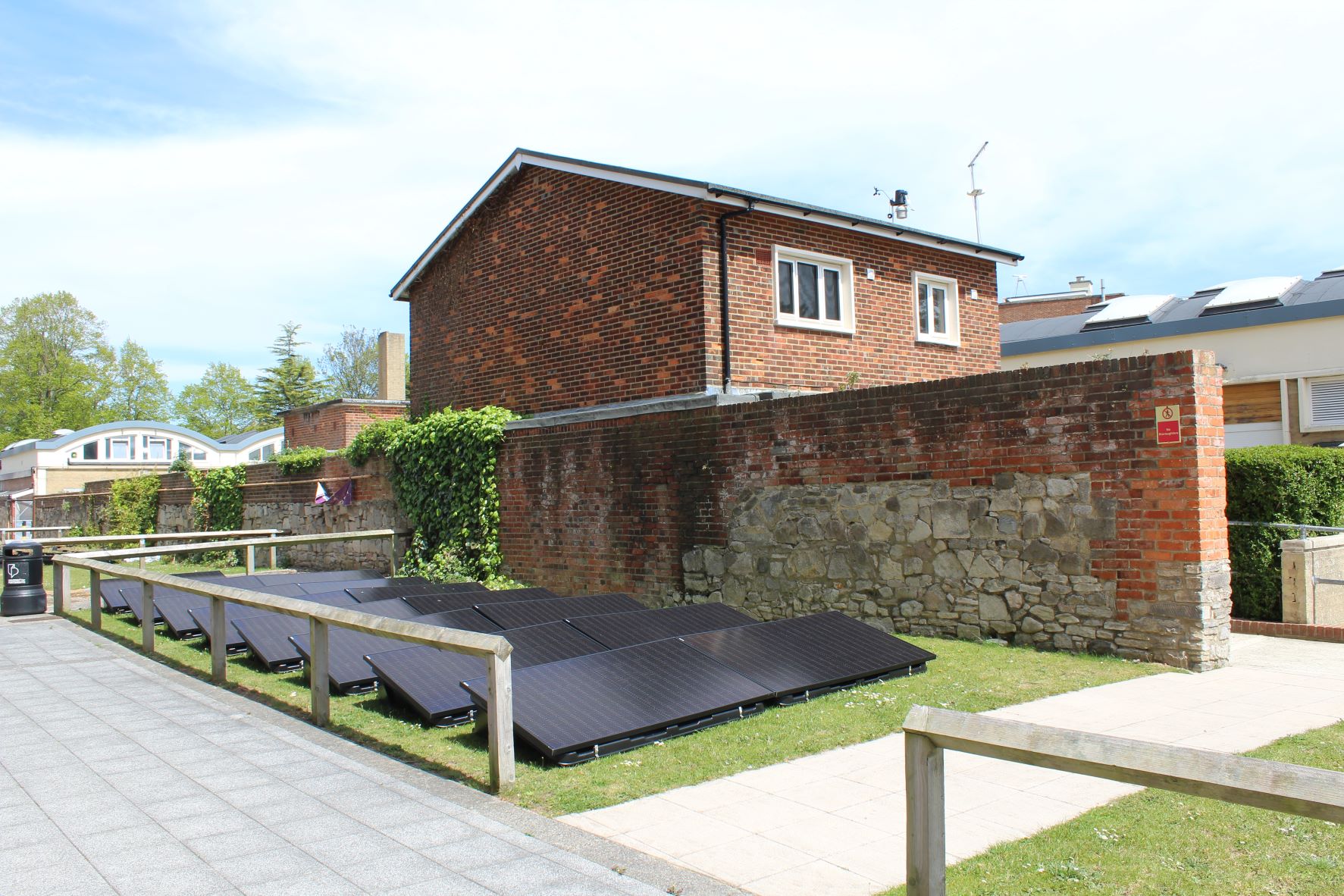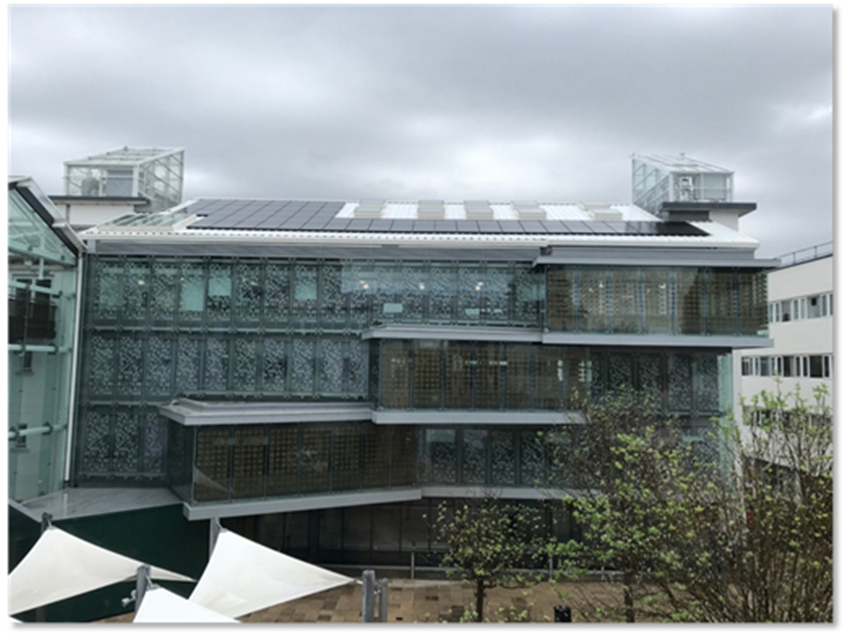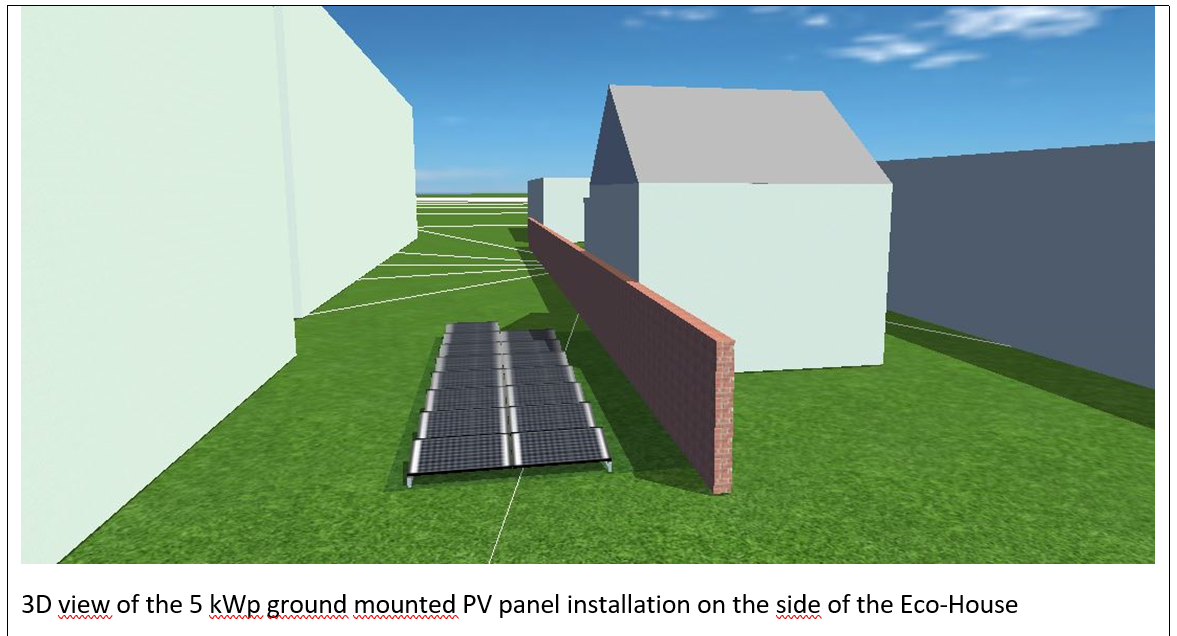University of Portsmouth – Living lab
Goal
A living laboratory on two buildings at the University of Portsmouth, to support research
Description
Living labs are defined as user-centered, open innovation facilities integrating research and innovation processes in real-life settings. A university-based living lab gives the opportunity for staff and students to analyse the behaviour of real systems as they operate and provides access to live testbeds for innovative scientific research and training.
As part of the SOLARISE project, a solar living lab has been created consisting of installations at two buildings at the University of Portsmouth. The Port-Eco House is a research facility consisting of an instrumented 3-bedroom household for research in energy efficiency and building performance. The Future Technology Centre is a building opened in 2018 for project-based learning and innovation in engineering and product design.
The SOLARISE project has allowed these buildings to be equipped with solar photovoltaic technology, smart battery storage, and energy monitoring systems. The installations were completed during May 2021 and are complemented by additional laboratory equipment that has been acquired to facilitate student projects, such as individual solar panels, inverters, load simulators, maximum power point chargers, batteries, etc.
The installation at the Port Eco-house consists of solar photovoltaic (PV) panels with a peak capacity of 5 kW. The panels are connected to a 5 kW inverter, which delivers the generated power to the AC electrical network of the house. A Tesla Powerwall 2 smart battery storage system was also installed and connected to the AC electrical network of the house. A number of common household appliances and computer equipment are connected to the AC network of the house and form the house’s electricity demand. On the monitoring side, a range of variables can be measured from individual PV panels, the inverter and the battery. In addition, there is a weather station nearby that provides useful environmental data that can be correlated with the energy production of the solar array.
The work at the Future Technologies Centre involved the installation of a bank of three Tesla Powerwall 2 batteries with a total storage capacity of 40.5 kWh and its coupling with the three-phase AC network of the building. Existing solar PV panels are located on the roof the building, while some windows have integrated solar cells that also generate electricity. The existing PV generation peak capacity is 25 kW in total, there are two three phase inverters with capacities of 20 kW and 5 kW, respectively, which interface the DC electricity generated by the photovoltaic equipment with the AC network of the building.
The monitoring systems at the living lab provide information about solar energy production at an array and individual module level, current and voltages associated with the modules and the solar array, power flows involving the solar array, battery and the grid connection, and the state of charge of the battery. All variables are sampled every 5 minutes and can be accessed remotely by means of web interfaces and mobile apps. These measurements are complemented by data from an existing weather station located on a nearby building, which provide useful variables including solar irradiance, air temperature, and wind speed.
In addition, there is a monitoring station for the living lab, as well as a range of small-scale, laboratory-based solar photovoltaic and energy storage equipment that is intended for training, demonstration and research purposes.


Key figures
Location: Portsmouth (UK)
Size: 5 kWp / 25 kWp
Energy production per year: 4000 kWh / 25000 kWh
Energy use: On-site within the Living Lab and the campus
Technology: Monocrystalline solar photovoltaic modules. Lithium-Ion smart battery storage system, power optimisers, monitoring systems.
Current status
Operational since May 2021.
Attention points / lessons learned
With the installation of a 5 kW photovoltaic array and 13.5 kWh battery storage system, the Port-Eco House has become electrically self-sufficient, in the sense that any import of electrical energy from the campus distribution network over the year is offset by the electrical energy that is exported from the house. The Port-Eco House has an electricity demand of about 10 kWh per day, which is typical for a 3-bedroom home in the UK. During the Summer of 2021, it was a common occurrence that the Port-Eco House did not require to import any electricity over a 24 hour period from the campus network, as its electricity demand was being met in full by the combination of solar photovoltaic generation and battery storage.
There were evenings during the summer of 2021 when the Future Technology Centre, which is a four-story university building, was run exclusively with energy from the 40.5 kWh battery storage system for a few hours after solar production had ceased.
Detailed info
- The resulting document on Living Lab Pilot (UoP)
- Poster 1 summary on Living Lab Pilot (UoP)
- Poster 2 summary on Living Lab Pilot (UoP)
- Video presentation on Living Lab Pilot (UoP)
Project flyer
Download here the flyer about the project
Project related news items
Useful links
https://www.port.ac.uk/research/research-projects/solarise
https://www.port.ac.uk/about-us/our-facilities/lab-and-testing-facilities/port-eco-house
https://www.port.ac.uk/about-us/our-facilities/teaching-and-learning-spaces/future-technology-centre
Technical schema

